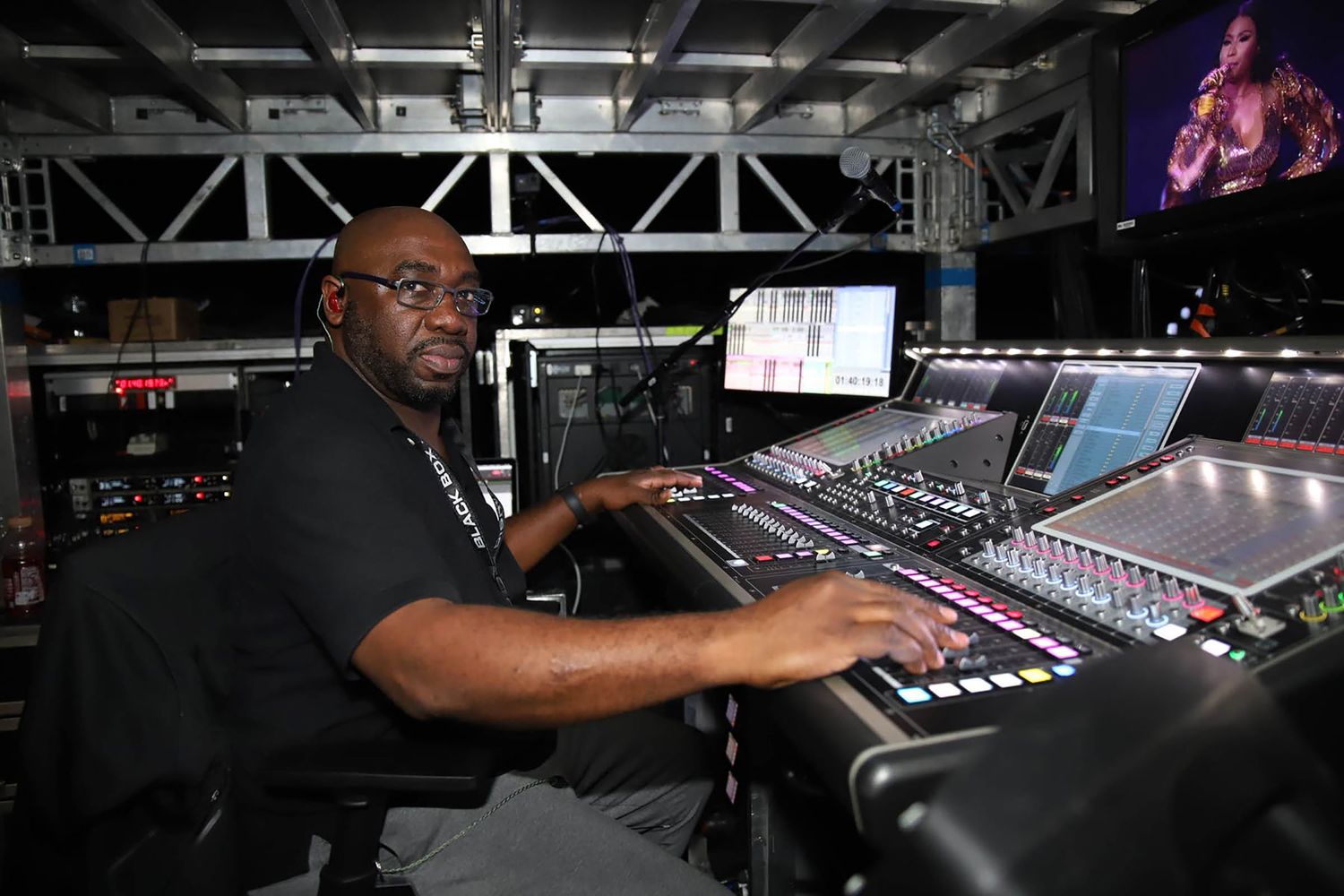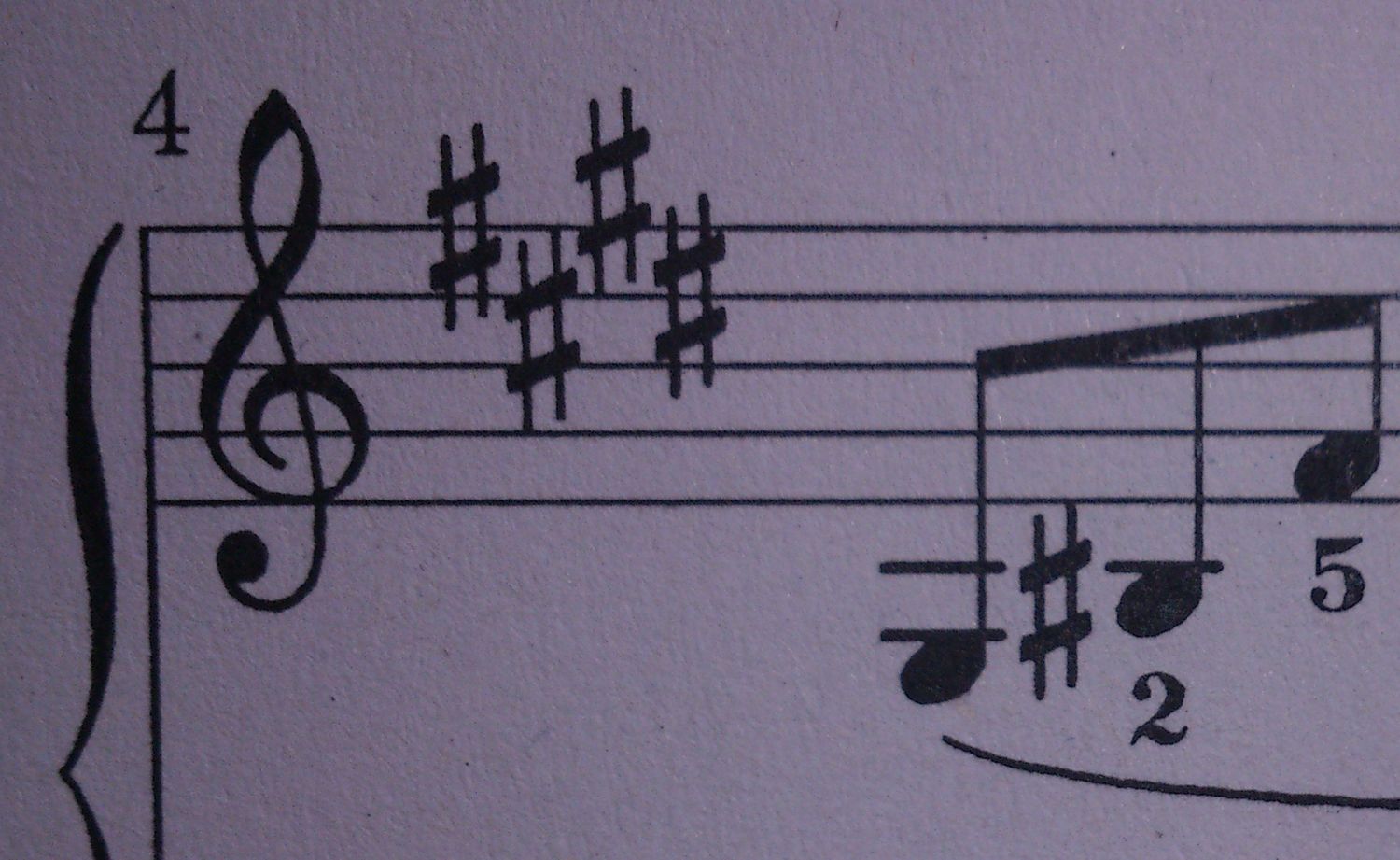Home>Production & Technology>Music Theory>Does Music Theory Matter When Making Sounds


Music Theory
Does Music Theory Matter When Making Sounds
Published: January 31, 2024
Discover the importance of music theory in sound production and understand how it enhances your ability to create mesmerizing melodies and harmonies. Learn why mastering music theory is essential for any aspiring sound producer.
(Many of the links in this article redirect to a specific reviewed product. Your purchase of these products through affiliate links helps to generate commission for AudioLover.com, at no extra cost. Learn more)
Table of Contents
- Introduction
- The Importance of Music Theory in Sound Production
- Understanding Musical Structure
- Harmonic Progressions and Chord Structures
- Melody and Counterpoint
- Rhythm and Time Signatures
- Dynamics and Musical Expression
- Using Music Theory to Create Emotion in Sounds
- How Music Theory Enhances Sound Design
- The Role of Music Theory in Collaboration
- Conclusion
Introduction
When it comes to creating music, whether in the studio or on stage, there is one aspect that often gets overlooked but remains crucial: music theory. Music theory forms the foundation of how music is composed, performed, and understood. It provides a set of rules and principles that guide the way notes, chords, melodies, and rhythms are arranged and interact with each other.
Some may argue that music theory is only important for classical musicians or those studying to become professional composers. However, understanding music theory has far-reaching benefits for anyone involved in sound production, regardless of genre or level of expertise. Whether you’re a beginner producer experimenting with new sounds or an experienced sound designer looking to push the boundaries of creativity, a solid understanding of music theory can greatly enhance your ability to create compelling and impactful sounds.
Music theory provides a framework for understanding the structure, harmony, melody, rhythm, dynamics, and expression within music. It teaches us how to create pleasing combinations of sounds, how to build tension and release, and how to evoke specific emotions through the manipulation of musical elements. By delving into the world of music theory, sound producers gain a deeper understanding of how to craft sounds that resonate with listeners on a more profound level.
In this article, we will explore the importance of music theory in sound production and discuss how it can enhance the creative process. We will delve into the various aspects of music theory, including understanding musical structure, harmonic progressions, melody and counterpoint, rhythm and time signatures, dynamics, and musical expression. Additionally, we will explore how music theory can be used to create emotion in sounds and how it plays a crucial role in collaborations with other musicians and producers.
So, whether you’re just starting your journey in the world of sound production or are a seasoned professional looking to expand your knowledge, let’s dive into the world of music theory and discover how it can elevate your craft to new heights.
The Importance of Music Theory in Sound Production
Music theory serves as the backbone of sound production, providing a solid foundation for creating impactful and cohesive musical compositions. Here are a few key reasons why music theory is essential in the world of sound production:
- Structural Understanding: Music theory helps producers understand the fundamental structure of music. It provides knowledge of scales, chords, and key signatures, allowing for the creation of harmonically rich and balanced compositions. With a strong understanding of music theory, producers can build chord progressions, create melodic lines, and construct arrangements that flow naturally and captivate listeners.
- Creative Exploration: While music theory provides a set of guidelines, it also opens up a world of creative possibilities. Understanding the rules of music theory allows producers to experiment within those boundaries and push the boundaries of conventional sound. By applying music theory principles, producers can explore new chord voicings, create unique melodies, and develop innovative rhythms that add depth and interest to their compositions.
- Effective Communication: Music theory acts as a common language for musicians and sound producers. It allows for effective communication and collaboration between artists, enabling them to exchange ideas, discuss musical concepts, and work together seamlessly. When everyone involved in the sound production process has a solid foundation in music theory, it becomes easier to convey musical ideas, make decisions, and create cohesive and harmonious sonic experiences.
- Musicality and Emotion: Music theory provides insights into how different musical elements interact with each other to create emotion and convey a particular mood. Understanding the relationship between melody, harmony, rhythm, and dynamics empowers sound producers to make deliberate choices that evoke specific emotions in their compositions. By employing music theory techniques, producers can create soundscapes that are moving, powerful, and deeply resonant with listeners.
- Efficiency and Professionalism: A solid understanding of music theory allows producers to work more efficiently and professionally. It speeds up the creative process as producers can make informed decisions and avoid trial and error. Moreover, when working with other musicians or collaborating on sound production, knowing music theory enhances professionalism and ensures a smoother workflow, resulting in a higher quality end product.
Overall, music theory plays a vital role in sound production, enabling producers to create well-structured and emotionally impactful compositions. It is the scaffolding upon which innovative and captivating sounds are built, and it provides a shared language that facilitates communication and collaboration. By embracing music theory, sound producers can elevate their craft and unleash their full creative potential.
Understanding Musical Structure
At the heart of music theory lies the concept of musical structure. Understanding the structure of a piece of music is essential for sound producers as it allows them to create compositions that flow naturally and engage listeners effectively. Here are some key aspects of musical structure to consider:
- Sections and Form: Music is typically divided into sections, such as verses, choruses, bridges, and outros. These sections follow a specific form, such as AABA, ABAB, or verse-chorus-verse, which gives the music a sense of organization and coherence. Understanding these formal structures helps sound producers arrange their musical ideas effectively and makes it easier to create compelling and memorable compositions.
- Phrases and Cadences: Within each section of a piece of music, there are smaller units called phrases. Phrases consist of musical ideas that have a sense of completeness. They often end with cadences, which are melodic or harmonic points of rest. Knowing how to construct and connect phrases using various cadences enhances the overall flow and coherence of a composition.
- Transitions: Smooth transitions between sections are crucial for maintaining the momentum and energy of a composition. By understanding the principles of music theory, sound producers can create seamless transitions that connect different sections, such as using transitional chords, melodic motifs, or rhythmic variations. Well-crafted transitions ensure that the listener’s attention remains captivated throughout the entire piece.
- Key Signatures and Modulations: Key signatures play a significant role in identifying the tonic or home key of a composition. They provide a framework for understanding the relationships between chords and melodies. Modulations, on the other hand, involve changing the key within a composition. Understanding how to modulate effectively allows sound producers to introduce variety and evoke different emotions within their music.
- Contrast and Variation: Effective use of contrast and variation within a composition makes it more engaging and captivating for the listener. By employing different musical elements such as dynamics, instrumentation, texture, and rhythmic patterns, sound producers can create contrasting sections or variations on a theme. These techniques add interest and keep the listener hooked throughout the entire piece.
By understanding the structure of music, sound producers can create compositions that are cohesive, dynamic, and emotionally resonant. A solid grasp of musical structure allows for more effective arrangement of musical ideas, seamless transitions between sections, and the ability to introduce contrast and variation in a purposeful manner. By employing these principles, sound producers can create soundscapes that are both engaging and satisfying for the listener.
Harmonic Progressions and Chord Structures
Harmony is a fundamental element of music that plays a significant role in shaping the overall sound and emotional impact of a composition. Understanding harmonic progressions and chord structures is essential for sound producers as it allows them to create harmonically rich and interesting compositions. Here are some key points to consider:
- Harmonic Progressions: Harmonic progressions refer to the sequence of chords used in a composition. They provide the harmonic framework upon which melodies and other musical elements are built. By understanding the principles of harmonic progressions, sound producers can create chord progressions that evoke specific emotions or suit the desired mood of a piece. Common progressions include the I-IV-V progression, the ii-V-I progression, and the circle of fifths progression.
- Chord Structures: Chords are the building blocks of harmony. Understanding chord structures allows sound producers to create rich and compelling harmonies in their compositions. This includes knowledge of different chord types such as major, minor, diminished, and augmented chords, as well as extended chords like seventh chords, ninth chords, and beyond. Sound producers can experiment with different chord voicings and inversions to add depth and complexity to their compositions.
- Voice Leading: Voice leading refers to the movement of individual voices or instruments within a chord progression. Understanding voice leading principles helps sound producers create smooth and melodic transitions between chords, resulting in a more cohesive and pleasing sound. Sound producers can consider factors such as avoiding parallel fifths or octaves, resolving dissonances, and creating interesting melodic lines within the harmonic framework.
- Modulations and Borrowed Chords: Modulations involve changing the key or tonal center within a composition. Sound producers can utilize modulations to add variety and interest to their music. Additionally, the use of borrowed or secondary chords, which are chords borrowed from a different key, can create unexpected and unique harmonic moments in a composition. These techniques add depth and complexity to the overall sound.
- Harmonic Analysis: Harmonic analysis involves studying the harmonic structure of a composition. By analyzing the chord progressions, sound producers can gain insights into the underlying harmonic choices and structure of a piece. This analysis helps them understand the compositional techniques used by other artists and can serve as a source of inspiration for their own sound production.
A strong understanding of harmonic progressions and chord structures empowers sound producers to create compositions with depth, emotion, and cohesion. By employing various progressions, experimenting with chord voicings, applying voice leading techniques, and exploring modulations and borrowed chords, sound producers can craft harmonically rich and captivating soundscapes that leave a lasting impact on listeners.
Melody and Counterpoint
Melody is often considered the most recognizable and memorable element of a musical composition. It is the sequence of single notes that create a musical line. Understanding how to craft compelling melodies and incorporate counterpoint techniques is crucial for sound producers. Here are some key points to consider:
- Creating Memorable Melodies: Crafting a strong and memorable melody is essential for creating an engaging and captivating piece of music. This involves understanding concepts such as contour (the shape of the melody), rhythm, and phrasing. By experimenting with different melodic intervals, rhythmic patterns, and using repetition and variation, sound producers can create melodies that stand out and resonate with listeners.
- Harmony and Melody Integration: Melody and harmony go hand in hand. A well-crafted melody often relates harmonically to the underlying chords. Understanding how to choose melodic notes that complement the harmonic progression can create a cohesive and harmonically rich composition. This includes incorporating chord tones, using passing and neighboring tones, and exploring tension and release within the melody.
- Counterpoint Techniques: Counterpoint involves the art of combining multiple melodic lines in a harmonically pleasing manner. It adds depth and complexity to a composition. Sound producers can explore techniques such as canon (voices imitating each other), imitation, and contrapuntal motion to create intricate and interwoven melodies. Counterpoint allows for the creation of textures that are engaging and dynamic.
- Developing Melodic Motifs: Melodic motifs are short musical ideas or phrases that are repeated throughout a composition. They serve as a unifying element, creating a sense of cohesion and familiarity. Developing and utilizing melodic motifs can enhance the overall structure and organization of a piece. By experimenting with motifs, sound producers can create melodic hooks that stay with the listener long after the music has ended.
- Expressive Melodic Techniques: Melody has the power to convey emotion, mood, and expression. Sound producers can use techniques such as dynamics, articulation, and phrasing to bring their melodies to life. By varying the intensity, speed, and accentuation of the melody, sound producers can add depth and emotion to their compositions. The subtle nuances in melodic expression create a more compelling and immersive listening experience.
Mastering the art of melody and counterpoint allows sound producers to create compositions that are memorable, harmonically rich, and emotionally engaging. By focusing on crafting memorable melodies, integrating harmony and melody, understanding counterpoint techniques, developing melodic motifs, and utilizing expressive melodic techniques, sound producers can create soundscapes that are both musically captivating and deeply resonant with listeners.
Rhythm and Time Signatures
Rhythm is the heartbeat of music, providing the framework for movement and groove. Understanding rhythm and time signatures is essential for sound producers as it allows them to create compelling and cohesive compositions. Here are some key points to consider:
- Time Signatures: Time signatures indicate the number of beats in a measure and the type of note that receives one beat. Common time signatures include 4/4, 3/4, and 6/8. Understanding time signatures helps sound producers establish the rhythmic structure of a composition and determine the placement of accents and downbeats. By experimenting with different time signatures, sound producers can create unique rhythmic patterns and add complexity to their music.
- Creating Groove: Groove is the feel and rhythmic energy present in a piece of music. It is what makes people tap their feet and move to the beat. Sound producers can create groove by utilizing syncopation, which involves placing accents on off-beats or emphasizing weak beats. By playing with rhythmic patterns, swing, and emphasizing certain beats, sound producers can create infectious grooves that captivate listeners.
- Polyrhythms and Cross-Rhythms: Polyrhythms and cross-rhythms involve the simultaneous use of multiple rhythmic patterns. They add complexity and depth to a composition. Sound producers can experiment with different rhythmic subdivisions, overlapping patterns, and independent rhythms to create intricate rhythmic textures. Polyrhythms and cross-rhythms bring a sense of excitement and interest to the music.
- Rhythmic Variation: Rhythmic variation involves altering the rhythm within a composition to add interest and dynamics. Sound producers can introduce rhythmic variations by changing note durations, adding rests, or using rhythmic motifs. This variation keeps the listener engaged and prevents the music from becoming monotonous. Well-placed rhythmic surprises create anticipation and maintain the listener’s interest throughout the piece.
- Syncopation and Off-Beats: Syncopation refers to accenting weak beats or placing emphasis on off-beats. It adds a sense of rhythmic tension and creates a dynamic and compelling rhythm. Sound producers can experiment with syncopation by displacing accents, using off-beat rhythms, and playing with accents within a measure. Syncopation gives music a sense of forward momentum and adds a touch of unpredictability.
Understanding and manipulating rhythm and time signatures allows sound producers to create compositions that are rhythmically engaging and groove-driven. By utilizing different time signatures, creating infectious grooves, exploring polyrhythms and cross-rhythms, incorporating rhythmic variation, and experimenting with syncopation and off-beats, sound producers can craft soundscapes that compel the listener to move and connect on a visceral level.
Dynamics and Musical Expression
Dynamics and musical expression are crucial aspects of sound production that add depth, emotion, and nuance to a composition. Understanding how to manipulate dynamics and expressiveness allows sound producers to create impactful and engaging music. Here are some key points to consider:
- Dynamics: Dynamics refer to the variations in loudness or softness within a piece of music. By playing with dynamics, sound producers can create contrast and shape the emotional journey of a composition. Understanding how to utilize different dynamic markings such as pianissimo, piano, mezzo-piano, mezzo-forte, forte, fortissimo, and crescendo/decrescendo allows sound producers to create moments of tension, release, and intensity.
- Articulation and Phrasing: Articulation and phrasing involve how individual notes or passages are performed. Sound producers can use techniques such as legato (smooth and connected), staccato (short and detached), and accents to shape the expressiveness of a composition. Additionally, understanding phrasing allows sound producers to create musical phrases that flow naturally and create a sense of musicality and breath within the music.
- Expressive Techniques: There are various techniques sound producers can employ to enhance musical expression. These include vibrato, bends, slides, trills, and glissandos, among others. These expressive techniques bring life and emotion to individual notes or passages, adding a personal touch and allowing sound producers to convey specific moods or feelings in their compositions.
- Layering and Instrumentation: Layering different instruments or sounds in a composition adds depth and texture. Sound producers can utilize different instrument groups and timbres to enhance expressiveness. For example, blending strings and woodwinds can create a lush and emotional sound, while incorporating percussion can add rhythmic intensity. Understanding the capabilities and characteristics of various instruments allows sound producers to make informed decisions when layering and orchestrating their compositions.
- Interpretation: Sound producers can bring their own interpretation and personal touch to a composition. By understanding the emotional intent and context of the music, sound producers can infuse their performance with unique expression. This involves tapping into their own musicality, improvising within the composition, and making intentional choices to convey a specific mood or message.
Dynamics and musical expression have the power to transform a composition from a series of notes into a deeply moving and immersive experience. By manipulating dynamics, utilizing articulation and phrasing, employing expressive techniques, exploring layering and instrumentation, and infusing their own interpretation, sound producers can create music that resonates with listeners on an emotional level.
Using Music Theory to Create Emotion in Sounds
One of the most powerful aspects of music is its ability to evoke emotions in listeners. Music theory provides a framework for sound producers to manipulate various musical elements in order to create specific emotional responses. Here’s how music theory can be used to create emotion in sounds:
- Harmony and Chord Progressions: Different chord progressions have the power to convey different emotions. Major chords often evoke feelings of happiness, joy, or triumph, while minor chords are associated with sadness, melancholy, or introspection. Understanding how to create harmonic tension and release through chord progressions allows sound producers to elicit specific emotional responses from listeners.
- Melody and Phrasing: Melodies can be crafted to evoke specific emotions. For instance, ascending melodies tend to create a sense of uplift and optimism, while descending melodies can convey melancholy or introspection. Additionally, the use of melodic motifs, repetition, and variation can impact the emotional impact of a melody. By manipulating the contour, rhythm, and phrasing of a melody, sound producers can create a wide range of emotional responses.
- Dynamics and Expressive Techniques: The use of dynamics, such as gradual crescendos or sudden drops in volume, can create intense emotional shifts within a composition. Additionally, expressive techniques such as vibrato, slides, or bends can add soulfulness or a sense of yearning to individual notes or phrases. By employing these techniques strategically, sound producers can enhance the emotional impact of their sounds.
- Tempo and Rhythm: The tempo of a composition can greatly influence its emotional impact. A fast tempo can create excitement, energy, or tension, while a slow tempo can induce relaxation, reflection, or sadness. Sound producers can also use rhythm to shape emotional responses. Syncopated rhythms might inject a sense of playfulness or anticipation, while steady, regular patterns can convey stability or calmness.
- Instrumentation and Sound Choices: The choice of instruments and sounds can greatly contribute to the emotional impact of a composition. For example, the warmth of a violin might create a sense of intimacy, while the power of an orchestral ensemble might evoke awe or grandeur. Additionally, the texture, timbre, and intensity of individual sounds can be carefully selected to enhance specific emotional qualities within the music.
By incorporating these elements and applying musical techniques, sound producers can create captivating and emotionally resonant sounds. Music theory serves as a guide, helping sound producers make intentional choices to elicit specific emotional responses from their listeners. Whether aiming to create a sense of joy, melancholy, excitement, or introspection, sound producers can utilize the principles of music theory to craft sounds that evoke deep emotional connections.
How Music Theory Enhances Sound Design
While music theory is often associated with composition and performance, its principles can greatly enhance the field of sound design. Here’s how music theory can enhance sound design:
- Creating Harmonically Rich Soundscapes: Sound design involves crafting sounds that complement the overall composition. By understanding the principles of music theory, sound designers can create harmonically-rich elements that blend seamlessly with the musical arrangement. This includes designing sounds that resonate well with the chords, melodies, and harmonic progressions, resulting in a cohesive and immersive sonic experience.
- Layering and Texturing: Music theory provides insights into how different instruments and sounds interact. Sound designers can employ principles such as counterpoint and voice leading to layer and texture sounds in a way that creates depth and interest. By applying these techniques, sound designers can add complexity and nuance to the sound design, producing a more intricate and engaging sonic landscape.
- Expressive Sound Manipulation: Understanding music theory allows sound designers to manipulate individual sound elements in ways that evoke specific emotions or moods. By applying techniques such as modulation, pitch shifting, or time stretching, sound designers can create dynamic and expressive sound effects that enhance the emotional impact of a scene or composition.
- Rhythmic Sound Design: Music theory’s knowledge of rhythm and time signatures can greatly enhance rhythmic sound design. Sound designers can synchronize sound effects or elements with the tempo and rhythm of the music, creating a coherent and synchronized sonic experience. Understanding rhythmic patterns and phrasing also allows sound designers to create sound effects that accentuate the rhythm of a scene or add tension and dynamics when needed.
- Applying Musical Concepts to Sound Effects: Sound designers can draw inspiration from music theory to create unique and memorable sound effects. By utilizing ideas such as melodic motifs, harmonic progressions, or melodic contour, sound designers can add musicality to their sound effects, making them more interesting and memorable. This musical approach to sound effects can create a strong connection between the sound design and the musical composition.
By incorporating music theory principles into sound design, sound designers can elevate their work to a new level of depth and creativity. The understanding of harmonies, textures, expressive sound manipulation, rhythmic design, and applying musical concepts to sound effects allows sound designers to create a cohesive and immersive auditory experience that complements and enhances the overall composition or scene.
The Role of Music Theory in Collaboration
Collaboration is an integral part of the creative process in the world of music production. Understanding music theory plays a vital role in facilitating effective and harmonious collaborations between musicians, producers, and sound designers. Here’s how music theory contributes to collaboration:
- Shared Language and Communication: Music theory provides a common language and framework for communication between collaborators. It allows musicians and sound producers to discuss musical concepts, ideas, and directions with clarity. This shared understanding ensures that everyone involved in the collaboration is on the same page, facilitating smoother communication and more efficient workflow.
- Harmonious Arrangements: Music theory helps collaborators create harmonious arrangements and compositions. By understanding concepts such as key signatures, chord progressions, and tonal structures, collaborators can work together to ensure that the musical elements seamlessly fit together. This understanding allows for the creation of arrangements that are cohesive and musically pleasing, enhancing the overall quality of the collaborative project.
- Building on Each Other’s Ideas: Music theory enables collaborators to build on each other’s ideas, expanding and enhancing the creative process. With a shared understanding of music theory, collaborators can suggest alternative chord progressions, melodic variations, or rhythmic ideas that complement and enhance the initial ideas. This collaborative exchange of ideas leads to richer and more diverse compositions.
- Efficient Arrangement and Orchestration: When collaborating with multiple musicians or sound designers, a solid understanding of music theory streamlines the arrangement and orchestration process. Collaborators can easily assign parts to different instruments or sound sources, ensuring that the arrangement is balanced and coherent. This knowledge enables collaborators to make informed decisions about instrumentation, harmonies, and dynamics, resulting in a more polished and professional end product.
- Mutual Learning and Growth: Collaboration in music production provides an opportunity for mutual learning and growth. By sharing knowledge and exchanging ideas rooted in music theory, collaborators can expand their understanding of different genres, techniques, and musical concepts. This exchange fosters a creative environment where everyone involved can learn from one another and continue to develop their craft.
Music theory plays a central role in collaboration, serving as a foundation for effective communication, harmonious arrangements, building on each other’s ideas, efficient orchestration, and mutual learning. By embracing music theory in collaborative endeavors, musicians, producers, and sound designers can unlock their creative potential, create cohesive and compelling compositions, and foster deeper connections within the creative community.
Conclusion
Music theory is a powerful tool that enhances sound production in numerous ways. It provides a solid foundation for understanding the structure, harmony, melody, rhythm, dynamics, and expression within music. By delving into the world of music theory, sound producers can gain a deeper understanding of how to craft sounds that resonate with listeners on a more profound level.
From understanding musical structure and creating harmonically rich compositions to crafting compelling melodies and exploring rhythm and dynamics, music theory guides sound producers in creating impactful and emotionally resonant sounds. Music theory enhances the creative process by providing a set of guidelines while also encouraging creative exploration within those boundaries.
Furthermore, music theory allows for effective communication and collaboration between artists and sound producers. It serves as a shared language, enabling the exchange of ideas, discussion of musical concepts, and the creation of cohesive and harmonious sonic experiences. Collaboration is enriched when everyone involved has a solid foundation in music theory.
Additionally, music theory plays a key role in creating emotion in sounds. By manipulating harmonic progressions, crafting memorable melodies, and utilizing expressive techniques, sound producers can evoke specific emotions and deepen the emotional impact of their compositions. The understanding of music theory allows for intentional choices that resonate with listeners on an emotional level.
Furthermore, music theory enhances the field of sound design by providing insights into harmonically rich soundscapes, layering and texturing, expressive sound manipulation, rhythmic design, and applying musical concepts to sound effects. By incorporating music theory principles into sound design, sound designers can create immersive and coherent auditory experiences.
In conclusion, music theory is an invaluable asset in the world of sound production. It provides a framework for creativity and expression, allowing sound producers to craft sounds that resonate with listeners emotionally and captivate them on a profound level. By embracing music theory, sound producers can elevate their craft, communicate effectively, and create immersive sonic experiences that leave a lasting impact on audiences.











